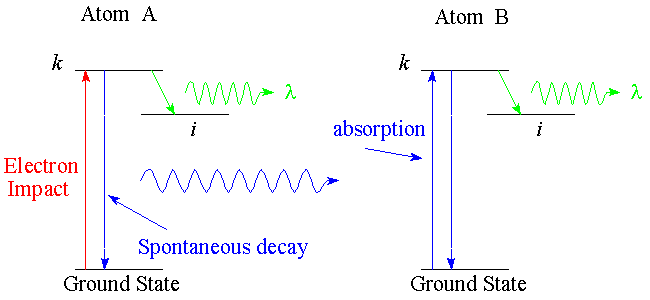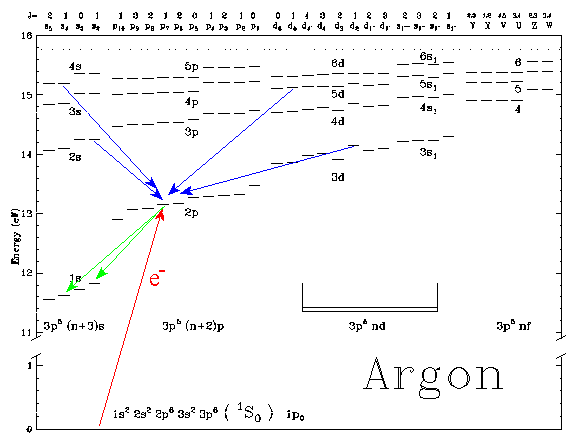II) Electron-Impact Excitation out of the ground state of Atoms
D. Pressure Effects
Radiation Trapping
Radiation trapping occurs when the radiation emitted by one atom is absorbed by another atom in the lower state (usually in the ground state). In this example, the photon emitted by atom-A is absorbed by Atom-B:
The effective branching ratio for the k-->i transition increases with pressure. Conversely, the k-->ground transition will have an effective branching ratio which decreases with increasing pressure. Radiation trapping predicts Qkiopt is pressure dependent.
Shown below is an energy level diagram for the argon atom. It should be noted that the 2p levels (Pachen notation for the 3p54p levels) are NOT optically connected to the ground state so there is no radiation trapping due to transitions out of the 2p levels. Yet the 2p levels still show some pressure dependence. This pressure dependence is even more pronounced in krypton and xenon.

This leads us to conclude that the pressure dependence in the apparent cross section is due to the various s and d manifolds which cascade into the 2p levels. The s and d manifolds are optically connected to the ground state and thus can exhibit radiation trapping.

references:
Measurement of electron-impact excitation into the 3p54p levels of argon using Fourier-transform spectroscopy J. Ethan Chilton, John B. Boffard, R. Scott Schappe, and Chun C. Lin, Physical Review A 57 (1998) 267-277.
 |
 |
 |